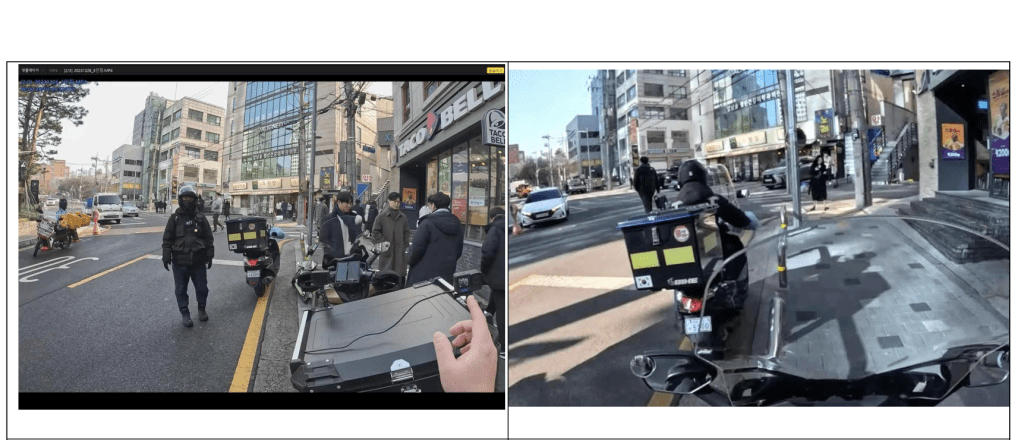Research to develop a risk assessment system for platform delivery riders (2024)
The Korean Public Service and Transport Workers’ Union
Riders’ Union of the Korean Public Service and Transport Workers’ Union
Center for Working Environment Health
Korea Institute of Labor Safety and Health
The researchers selected 38 hazards that could be related to the work of platform delivery riders. Based on the results of the survey, fieldwork, and meetings, 11 of the 38 risks were categorized as significant risks. Among those significant risks, the number of driving-related factors and factors related to the app or algorithm were significantly higher. Driving-related factors included slippery roads due to rain, snow, and fallen leaves; dangerous driving by other drivers, such as speeding and running red lights; and road conditions and traffic systems that make it difficult to drive a two-wheeler. App and algorithm-related factors included the danger of touching and operating the app while driving; the inability to keep your eyes on the road while looking at the app; and promotions that entice drivers to drive in dangerous conditions (heavy rain, heavy snow, etc.). These two areas urgently need attention and improvement.
There are global concerns about platform companies’ apps and algorithms, such as protecting workers’ privacy and ensuring their right to know. This study confirms that apps and algorithms are also important factors in safety. Topics for future discussion include: reducing fluctuations in fares due to sales promotions; stabilizing base fares; incorporating driver experience into app design; setting ‘safety fares;’ developing algorithms that can ensure safety and encourage safe behavior; and ensuring workers’ rights and means of participation in decisions related to apps and algorithms. At the very least, for the 11 factors identified as significant risks in the survey, discussions about remediation and accountability should begin quickly. The risk assessment of platform delivery riders should not stop with this study and must be continued. This will require institutionalizing the roles of various stakeholders in the risk assessment framework, including intermediaries, platform companies, and rider parties, beyond the employment relationship. The scope and methods of risk assessment should also be expanded.
Road and climate conditions, as well as algorithms, have been identified as significant risk factors in surveys and fieldwork, and both their assessment and improvement should be included in risk assessments. In addition to individual rider-level assessments, various methods of risk assessment should be explored, including systematic approaches through the analysis of disaster cases (traffic accidents or industrial accidents) and preventive approaches (pre-risk assessment of an algorithm). If such a risk assessment system is established, it will be an activity that goes beyond the current legal boundaries. Therefore, efforts to improve the risks derived from the risk assessment should also be made beyond the current legal limitations. To finance improvements, it is possible to utilize the Workers’ Compensation Fund or introduce new funding sources such as platform risk fees.
To enable this expanded risk assessment, the role of the Ministry of Employment and Labor is important. The Occupational Safety and Health Committee for Safer Workplaces of the Economic, Social and Labor Council has already agreed to “identify new hazards in the service sector, including platform labor, and improve the legal system.” The Ministry of Employment and Labor’s regulation on risk assessment also specifies the obligation of the Minister of Employment and Labor to ensure that workplace risk assessment is effectively promoted. First, it is necessary to amend the Occupational Safety and Health Act to include ‘those who receive labor from special type workers’ and ‘those involved in the collection and delivery of goods’ in the definition of employers who are required to conduct risk assessments, and to include algorithms in the contents of risk assessments. This should also be made clear in the Ministry of Employment and Labor’s regulation.
Based on the findings of this study, we hope that the practical steps to improve the safety and security of platform delivery riders is made by the tripartite participation. We look forward to further research to identify the risks faced by various special employment workers, freelance workers, and telecommuting workers, and to identify ways to improve them.

Comments